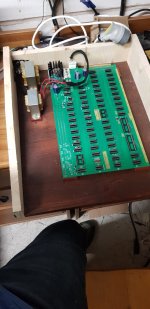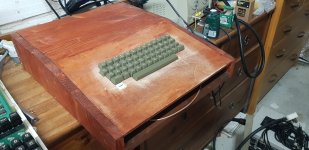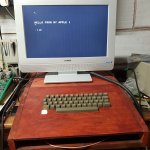Gary C
Veteran Member
I have my order in with Uncle Bernie, and I got the Sprague axial caps ordered from Unicorn. It's starting to get exciting!
My biggest hurdle is going to be finding a cheap keyboard. Seems like the going rate for Apple ][+ boards is $200, and older ASCII boards way more than that. I might put a post out to the Apple II Facebook group to see if someone has a spare they're willing to part with for a reasonable price.

✅ ⌘ Apple II Keyboard with Encoder Tested Working (II Plus) | eBay
It has been tested on a working Apple II Plus system and all the keys display the proper characters on the monitor. All of the keys function as they should. The ribbon cable which attaches the keyboard to the motherboard is intact with all pins, none broken.
www.ebay.co.uk
As you say, not cheap but about the best $/age if you want a reasonable facsimile








